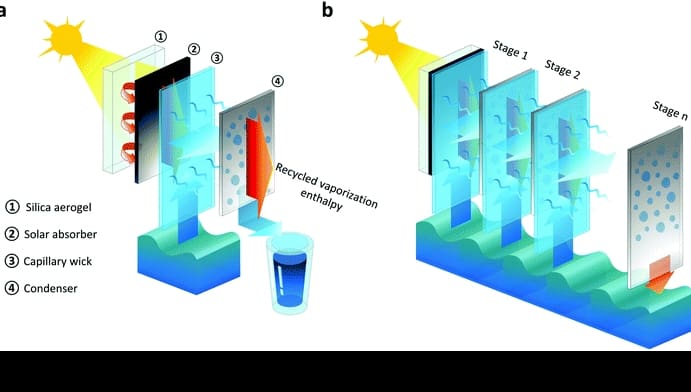Scientists funded by US and Chinese bodies have published details of a multi-stage solar desalination process, claiming a record-high solar-to-vapor conversion efficiency of 385% under one-sun illumination, where more than 75% of the total production was collected through condensation.
The researchers say that combining interfacial solar heating and vaporization enthalpy recycling through a capillary-fed multistage architecture, known as the thermally-localized multistage solar still (TMSS), significantly improves the performance of passive solar desalination.
The prototype device also addresses practical issues related to device operability including water collection and salt-rejection. The experiments show that more than 75% of the vaporized water was collected through condensation. The salt-rejection capability was demonstrated by operating the device continuously during the daytime and allowing the accumulated salt to be passively rejected through diffusion during the night time.
This authors say their paper demonstrates a practical solution with the TMSS architecture for various off-grid and water-stressed areas.
The full paper is accessible free of charge from Energy and Environmental Science journal by following this link:
https://pubs.rsc.org/en/content/articlelanding/2020/EE/C9EE04122B#!divAbstract
